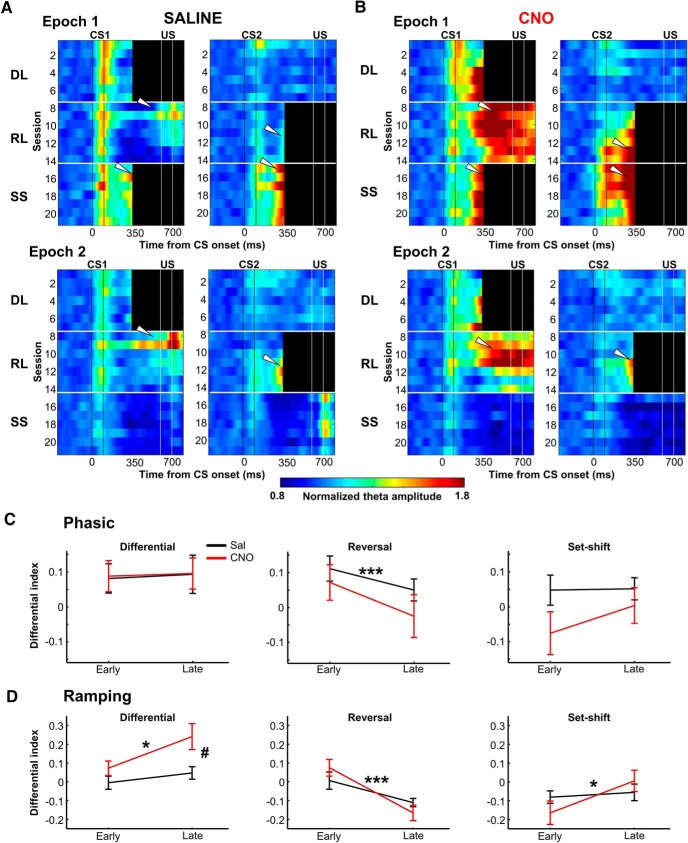Figure 4.
Increasing the mPFC activity promoted the development of ramping theta responses selective for behaviorally relevant stimuli. A, Normalized theta amplitude to the originally reinforced CS (CS+; left) and unreinforced CS (CS−; right) in saline-treated rats is plotted over time within trials (x-axis) across days (y-axis, descending from top to bottom) in Epochs 1 (top) and 2 (bottom). Horizontal white lines separate the three stages of learning. Two vertical black and white lines show the timing of the CS and US, respectively. Black bars mask the artifact generated by the US. During the differential learning stages, theta amplitude was transiently increased during the CS+ but not the CS−. Although this phasic response did not track the subsequent change in stimulus contingency, theta amplitude came to ramp up toward the expected onset of the US during the reversal learning and set-shift stages (white arrows). B, The same as A for CNO-treated rats. Within a few sessions in the differential learning stages, theta amplitude came to ramp up toward the expected US onset, and the ramping responses tracked changing stimulus contingency during the reversal learning and set-shift stages (white arrows). C, The Differential Index of the phasic responses during the first three (early phase) and latter three (late phase) sessions of each learning stage (mean ± SEM; saline: n = 8 rats; CNO: n = 9 rats). ***p < 0.001 (main effect of phase in mixed ANOVA). D, the same as C for the ramping responses. During differential learning, both groups improved the differentiation of the ramping responses across two phases, and the differentiation was stronger in CNO-treated rats than saline-treated rats. *p < 0.05, ***p < 0.001 (main effect of stage); #p < 0.05 (main effect of group). DL- Differential Learning; RL- Reversal Learning; SS- Set-shift.

